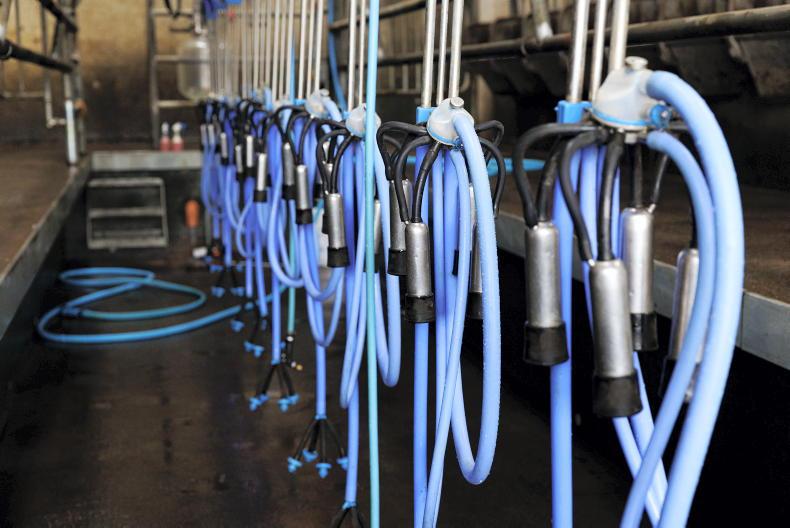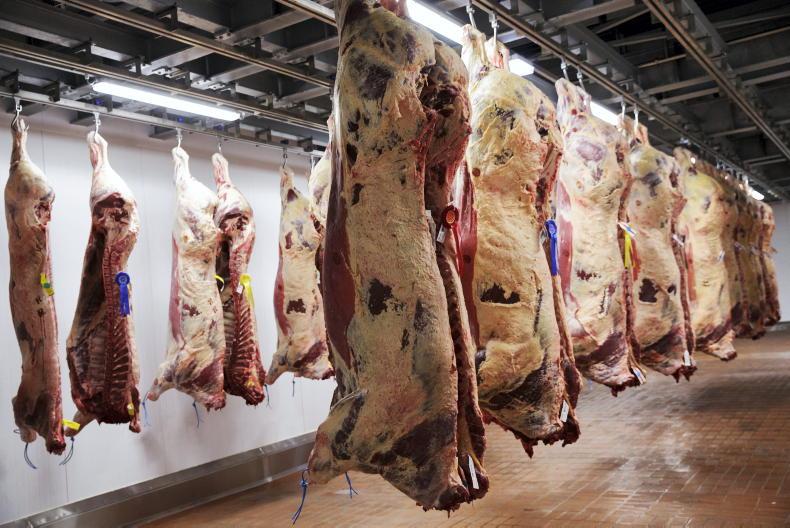This week’s print edition of the Irish Farmers Journal explored the pattern of Irish agri-food exports between January and August, based on Bord Bia data.
Overall, when drinks, sea food and prepared consumer foods are included, the value has increased to €10.6bn, a 25% increase on the corresponding period last year, while volume is up by 8%.
For the core products from Irish farms, dairy shows a 35% increase in export values, beef is up 27%, sheepmeat is up 20% and poultry is up 34%.
Pigmeat shows a 2.6% decline, as does horticulture and cereals, which are down by 14% in value.
Exceptional year
For Irish farmers involved in dairy, beef and sheep production, 2022 appears like it is shaping up to be an exceptional year.
However, export data is just one part of the story - the other key issue is input costs. These have risen to such an extent that it is only really the dairy sector that has kept pace.
The ability to supply the same product as UK farmers at a farmgate price 50c/kg lower appears to be our unique selling point
The globally competitive nature of Irish dairy is reflected in its strong performance in all global markets.
This is even more credible in markets beyond the UK and EU, as these are generally priced in US dollars, which has been particularly strong compared with the euro this year.
Growing the market for both volume and value in the US is a particularly notable achievement, even if it was aided by the infant formula opportunity arising from US recall and production difficulties.
Beef markets narrow
While beef export performance appears strong with growth in value and volume, the reality is that our performance continues to be based on the UK.
There is a particularly strong cross-border dimension to beef exports in 2022 and further growth in sales to the EU.
However, despite the investment in the US market, Irish beef exports have plummeted.
Volumes were already relatively low, with 2021 sales below 2020 levels
No doubt the fact that Brazil quickly filled the tariff free quota and Irish exports to the US are now subject to a tariff of almost 25% hasn’t helped.
However, the reality is that volumes were already relatively low, with 2021 sales below 2020 levels, despite the US being the second-largest importer of beef in the world.
It was a similar picture in Asian markets, with sales falling sharply this year.
Minister for Agriculture Charlie McConalogue and Minister of State Martin Hayden led a trade mission to this area recently, with a particular focus on driving beef sales to Japan.
Irish farmers will be watching export data anxiously for the remainder of this year and 2023 to see if this has paid dividends.
The area is also a target for EU promotional funding, which is managed by Bord Bia, so Irish exporters will be hoping to benefit from this as well.
However, the bottom line remains that the UK remains our core beef export market and the ability to supply the same product as UK farmers at a farmgate price 50c/kg lower appears to be our unique selling point in that market.
Other categories
After strong growth in volume and value of exports in 2021, sheepmeat exports continued the upward trend, particularly in the earlier part of this year.
More recently, prices have slipped back, but export volumes remain strong and overall value also recorded a strong increase between January and August, up 20%.
For pig producers, difficulties remain, as alternatives to the Chinese market are sought. China’s rapid pig herd rebuilding curbed its demand for imported pork and this has had a serious impact on Irish farmers and exporters.
Mushrooms are the key component of horticulture and their sales slipped in the first eight months of 2022.
Cereals are traded cross-border and the link-up between Fane Valley and Drummonds will increase the demand for oats to service the new Fane Valley factory in Co Armagh.
Read more
Irish agri-food exports up 25%
Irish listed global food brands struggle in inflationary market
This week’s print edition of the Irish Farmers Journal explored the pattern of Irish agri-food exports between January and August, based on Bord Bia data.
Overall, when drinks, sea food and prepared consumer foods are included, the value has increased to €10.6bn, a 25% increase on the corresponding period last year, while volume is up by 8%.
For the core products from Irish farms, dairy shows a 35% increase in export values, beef is up 27%, sheepmeat is up 20% and poultry is up 34%.
Pigmeat shows a 2.6% decline, as does horticulture and cereals, which are down by 14% in value.
Exceptional year
For Irish farmers involved in dairy, beef and sheep production, 2022 appears like it is shaping up to be an exceptional year.
However, export data is just one part of the story - the other key issue is input costs. These have risen to such an extent that it is only really the dairy sector that has kept pace.
The ability to supply the same product as UK farmers at a farmgate price 50c/kg lower appears to be our unique selling point
The globally competitive nature of Irish dairy is reflected in its strong performance in all global markets.
This is even more credible in markets beyond the UK and EU, as these are generally priced in US dollars, which has been particularly strong compared with the euro this year.
Growing the market for both volume and value in the US is a particularly notable achievement, even if it was aided by the infant formula opportunity arising from US recall and production difficulties.
Beef markets narrow
While beef export performance appears strong with growth in value and volume, the reality is that our performance continues to be based on the UK.
There is a particularly strong cross-border dimension to beef exports in 2022 and further growth in sales to the EU.
However, despite the investment in the US market, Irish beef exports have plummeted.
Volumes were already relatively low, with 2021 sales below 2020 levels
No doubt the fact that Brazil quickly filled the tariff free quota and Irish exports to the US are now subject to a tariff of almost 25% hasn’t helped.
However, the reality is that volumes were already relatively low, with 2021 sales below 2020 levels, despite the US being the second-largest importer of beef in the world.
It was a similar picture in Asian markets, with sales falling sharply this year.
Minister for Agriculture Charlie McConalogue and Minister of State Martin Hayden led a trade mission to this area recently, with a particular focus on driving beef sales to Japan.
Irish farmers will be watching export data anxiously for the remainder of this year and 2023 to see if this has paid dividends.
The area is also a target for EU promotional funding, which is managed by Bord Bia, so Irish exporters will be hoping to benefit from this as well.
However, the bottom line remains that the UK remains our core beef export market and the ability to supply the same product as UK farmers at a farmgate price 50c/kg lower appears to be our unique selling point in that market.
Other categories
After strong growth in volume and value of exports in 2021, sheepmeat exports continued the upward trend, particularly in the earlier part of this year.
More recently, prices have slipped back, but export volumes remain strong and overall value also recorded a strong increase between January and August, up 20%.
For pig producers, difficulties remain, as alternatives to the Chinese market are sought. China’s rapid pig herd rebuilding curbed its demand for imported pork and this has had a serious impact on Irish farmers and exporters.
Mushrooms are the key component of horticulture and their sales slipped in the first eight months of 2022.
Cereals are traded cross-border and the link-up between Fane Valley and Drummonds will increase the demand for oats to service the new Fane Valley factory in Co Armagh.
Read more
Irish agri-food exports up 25%
Irish listed global food brands struggle in inflationary market










SHARING OPTIONS